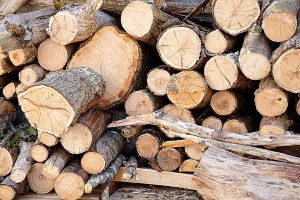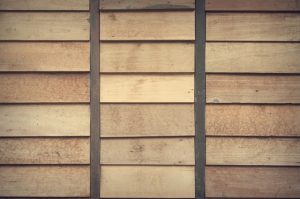As we proceed towards a future of more sustainable and efficient developments wood construction will grow more and more a regular alternative for all sorts of buildings. Our learning curve was steep and the approval is steadily rising in several development industries. We’re seeing improved application of wood building in small to moderate density residential developments in addition to institutional structures, schools, hospitals, industrial and commercial buildings. As the ease of construction with timber in conjunction with the largest cranes available makes the build run smoothly. Some constructed examples would be the Docklands Library at Melbourne, International House nearing conclusion in Barangaroo Sydney, together with a lot more in design phases. From the residential industry Strongbuild are building 60 flats in Macarthur Gardens, Campbelltown and AVEO’s present advancement in Bellavista Sydney (10 Storeys) made by Jackson Teece is presently among the most significant Cross Laminated Timber improvements as quantity is concerned. Aveo’s mixture of flats and industrial and communal facilities is a part of a 450 apartment home community which will incorporate an aged care centre.
Since the industrial revolution, the sophistication of buildings and house extensions has been increasing exponentially and has attained new heights using three dimensional computer technologies, for example Revit / BIM, which is now integral to the style of contemporary buildings to help manage co-ordination of solutions and areas, forecast efficiencies, quantify performance, gauge effect on occupants and the environment during construction and also through a building’s whole life cycle. It is now actually an issue of just how much information we want as a consequence more than what’s possible.
We’re aspiring to make more effective, cost effective and sustainable buildings which are healthy for their occupants and render the tiniest ecological/energy/carbon footprint potential. The marketplace is presently creating a giant step towards those goals with a few of the most recent technology focusing on a few of the earliest and possibly only genuinely sustainable building material in the world – timber.
The Way the Natural Home Can Sustainably Resource the Constructed Environment
Plantation woods give an abundant source of wood globally. According to a Yale University Study, the planet’s forests contain roughly 385 billion m3. An additional 17 billion m3 are increasing yearly (4.4% growth) and 3.4 billion m3 is chosen annually (20 percent of new yearly growth). In Australia the whole forested area is roughly 125 million Ha. 2 million Ha (1.6 percent) of plantation supplies over 80 percent of total wood production. Accessible multiple-use public indigenous forests = 5.5 million Ha (4.5 percent). Approx 80,000 Ha (1.4 percent) of accessible multiple use public native forests have been chosen yearly.
Timber has an extremely large carbon storage capability (0.25t of carbon per 1m3 of wood) making every wood building efficiently a carbon sink capable to cancel the building’s carbon emissions for decades of performance. The embodied energy of wood products is considerably lower in comparison to concrete or steel. Timber products also have less water and create less waste during installation and production in contrast to other substances.

How Healthy Buildings Could Make Healthy Individuals
Some studies have connected modern wood buildings to different health benefits such as; pupils educated in wooden classrooms with diminished heart rate, lower blood pressure and diminished perception of anxiety from interactions with educators; decreased anxiety levels and higher healing levels in hospital patients; raise in many interactions between people in elderly care facilities.
Our Normal Evolution Can Affect Our Constructed Evolution
Growth in wood technology has evolved over 100 Decades. From tree pruning comes a number of the wood goods, such as Glulam (glued laminated wood) or LVL (laminated veneer lumber) are well understood and commonly employed. A number of the more recent construction materials and technology we see emerging comprise material systems such as CLT (Cross Laminated Timber) first developed in the early 1990s in Lausanne and Zurich, Switzerland. Reinforced wood beams and beams, pre- and – post-tension wood beams, composite timber-concrete flooring plank structure, new layouts for wood grid cubes, innovative steel connectors for wood construction (especially for tall buildings and seismic applications), are commercially available and used in Australia.
Along with the technological improvements keep coming. Our study uncovered the most recent developments including bright laminated wood lamellas that respond to changes in moisture content and may be used for automatic sunshades without the necessity of any extra controls (manual or digital). Products such as translucent, magnetic and reflective wood may soon offer dentures or boards which may alter their visual attributes, control your smart phone, or let to control lighting, blinds or alternative construction systems by touch (without wiring).
Apart from the reduction in weight, ease of producing with minimal waste creation and simplicity of setup the most critical facet of contemporary timber construction, accountable for the majority of the positive aspects concerning building rate, cost savings, building security and quality management, is the rather large degree of prefabrication. Home extension builders appreciate the ease of prefabrication and minimal waste creation from the timber used on site. The Majority of the building construction is fabricated off site in a controlled mill surroundings, largely eliminating danger of price growth, time delays, accidents and quality management problems related to onsite construction.
As we look at the way the utilization of engineered wood in Australia is increasing in popularity, and has been used in much more complicated and intriguing manners than it has before BPN’s attribute on engineered wood delves deeper into some of those technology allowing unprecedented timber building structure.
Technological improvements
New advancements in technology have played a significant part in engineered timber products used more frequently and in much more interesting ways.
A pivotal part of technology that has been created by research consortium, Sustainable buildings of the Future (STIC), is your EXPAN system. It makes constructing standard business construction grids of eight by 12 metres a simple effort for wood, where formerly it wasn’t possible.
The EXPAN prefabricated structure system invisibly post-tensioned tendons into wood to lock the machine together. This permits new ventures in the capability to build industrial and commercial buildings out of wood, with the appropriate crane hire, the construction of any building is possible.
This technology has been utilized at the Massey University College of Creative Arts building in New Zealand to enable the wood beams to bend during an earthquake, in order to resist the floor acceleration and vibration.
The technology has the ability and supply of power to withstand a strong earthquake, where also the long-span exposed wood gives a warm aesthetic into the 3600 sqm gallery, studio and teaching area.
Architect Katherine Dean, from Athfield Architects in New Zealand, says that the wood technology provides us the large, open length frame to get a totally uninterrupted distance with no walls that empowers Massey to accommodate the distance over time to shift with teaching requirements.
The EXPAN system has enabled engineered wood to possess the endurance and strength of steel, however the stylishness of wood. It gives a location for wood in industrial and commercial design.

Interesting time for wood industry
David Simpson from Wood Solutions says that it is an exciting time for the design and construction industry and the Australian timber industry. Architects and engineers have started to view the creative choices and investigating the challenges of fresh wood systems, applications and materials.
One architect that has seen the changes is be Paul Haar, architect of Candlebark School Library at the Macedon Ranges, Victoria. Despite being advised from the structural engineer to the job that the subterranean roof would have to get held up by cement or steel constructions, Haar stayed determined to utilize an all wood roof frame due to the carbon monoxide inside it by the air, its easy workability and possible aesthetics.
He suggested massive post and beam portals which carpenters could fabricate off-site in experienced pine laminated veneer lumber.
Starting with 12m long by 1.2m wide by 35mm and 45mm thick slabs of LVL, they have been shaped and thread laminated into 12m extended by 600mm deep by 205mm thick roof beams that interval continuously finished articles.
No wood was wasted by the first LVL slabs, as cut-offs were torn into 140mm deep purlins that interval between the roofing beams. Structural grade experienced pine plywood has been put over the roof purlins to fill out the roof. It supports between 500-600mm of ground, effectively 2.5 tonnes per sqm, which protects the construction against heat during summer and potential wildfire.
Environmental benefits
By using engineered wood, environmental benefits can be obtained – it’s the only sustainable structural structure material of scale. Tree cutting companies have seen many gains towards the building industry as a result of the cut down trees they have sourced. This is evident from Melbourne’s Forte construction, where a Life Cycle Analysis was conducted by Melbourne’s RMIT University. It revealed the building decreased cumulative non-renewable energy requirement by 56 percent and reduced eutrophication (the source of extra nutrients into the water system) by 75 percent.
The statistics show how important that the substitution of an engineered wood product could be in a relatively compact construction. Increasing their usage across bigger multi-residential and business jobs might have a significant effect on Australia’s carbon market.
Two more wood buildings are under construction in Melbourne – both the Dockland Library and Community Centre, and Melbourne University’s Parkville Campus Architecture construction. Overall, there are a few 20 thick engineered wood – largely CLT – buildings at a variety of phases of preparation, design, construction and documentation in Australia.



